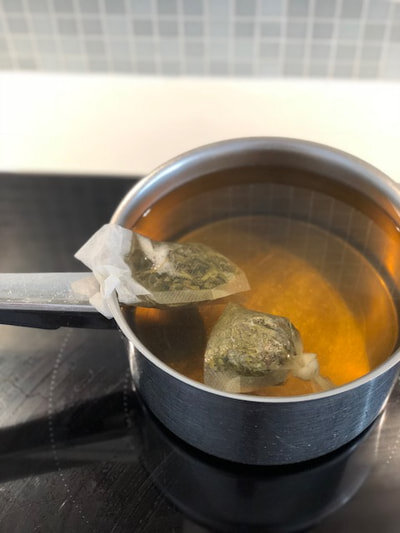How to make kombucha - Champagne for your gut
Here I explain how to make your own cheaply and easily.
I'm often asked what is the best probiotic for your gut. My answer is always: fermented foods and drinks. When you buy a probiotic supplement whether in a liquid or pill form, it might have 2, 3, 6, or if you're spending a lot, even 30 different types of friendly bacteria and that's before you start counting how many billions. With bought probiotics or kombuchas, you can easily clock up a £250 spend in 3 months if you were to take them daily.
DIY kombucha costs pennies and there may be as many as 50 different strains in a batch depending on the weather and the type of tea you have used. Variety, and lots of different bacteria, is absolutely vital to a healthy gut. You need to plant friendly bacteria in your gut daily to keep you and your microbiome (gut bacteria) healthy. Probiotic bacteria are like passing travellers - they pass in, and out (via your stools) so you need to keep them topped up.
In my experience with clients, if you LOVE eating or drinking a particular food or drink, you'll feel motivated to incorporate it into your diet for the long term and it becomes a staple of your diet to keep your microbiome and you, the host fo this bacteria, healthy. Many clients really get into kombucha and find it is a great drink to have socially in a nice glass with clinking ice and a slice of lemon, in place of alcohol or a sugary soda.
Commercial kombuchas can be expensive and quality can vary, so if kombucha is going to become your staple, go DIY. It is easy, and can become a really satisfying low-time-consuming hobby. Once you have bought a large jar, a funnel, a glass bottle SCOBY, tea and sugar you're up and running. The more times you make kombucha the more of a master you'll become at it. Interestingly it can taste slightly different and the fizz can be much less or more from batch to batch.
Ingredients:
2 litres of boiled water
110g (or just under half an American cup size) of sugar
2 tbs green, jasmine, or black tea leaves (or you can mix them - I like to mix jasmine and green)
Kombucha starter culture SCOBY (available to purchase from online sellers on sites such as Amazon and Ebay)
A quarter of a cup, about 60ml of kombucha from your last batch (or a bought one)
Boil the water in a saucepan and take off the heat.
Add the tea leaves (I put my leaves in pouches you can buy in kitchen shops or you could just use bought tea bags instead).
After 10 minutes take out the tea bags and add your sugar and stir.
When the water has cooled down to room temperature pour into a big glass jar.
Add your kombucha from a last batch or a bought one, plus the SCOBY and put a kitchen towel on top with an elastic band to keep the flies away (they can be very attracted!).
Put the mixture somewhere dark in your home like a cupboard and leave to ferment for between 6 and 14 days. Try the mixture and take it out of the cupboard ready to drink when it is a little fizzy on the tongue, not too sweet or vinegary for your liking. If you leave it to ferment too long the mixture can become too vinegary - try it now and again to see when the taste suits you best. The length of time needed for the tea to ferment (the sugar to be eaten by the bacteria, and the carbon dioxide which provide the fizz to develop will depend on the temperature of the room, the weather, the season, the strength of the tea, the type of tea, and the earth the tea was grown in). In the current hot weather mine tastes “ready” (no longer sweet but not overly sour, after six days).
Remove the SCOBY.
Using a funnel, pour the kombucha into a sterilised bottle and put the lid on.
Store in the fridge and drink over the course of a month (though you may find it is so delicious you drink it much quicker than that!)




